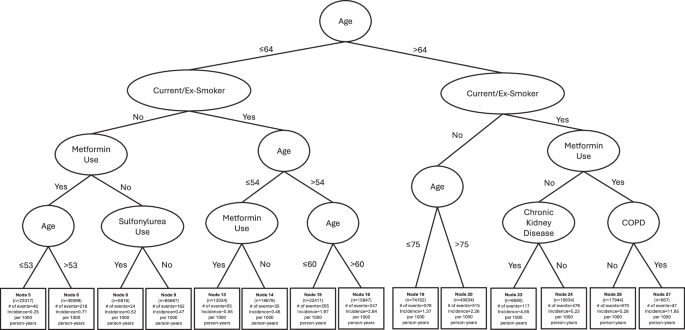Amino acid profiles reveal promising biomarkers for muscle health in older people


The loss of muscle mass and strength poses an increasingly significant challenge for an aging society. Prof. Kristina Norman’s team at the German Institute of Human Nutrition Potsdam-Rehbruecke (DIfE) has now shown that amino acid profiles could serve as promising biomarkers for muscle health in older people. These findings could help identify people at increased risk of sarcopenia earlier, enabling targeted interventions to enhance quality of life as people age. The results were published in the journal Biogerontology.
Aging is characterized by a gradual and inevitable decline in muscle strength and mass, which can lead to sarcopenia. The loss of skeletal muscle is individual and depends on factors such as physical activity, age, gender and metabolic health, highlighting the complexity of aging as a multifaceted process.
Amino acid profiling can be used as a tool to assess skeletal muscle health in older people. Free amino acids are distributed in blood plasma and cells, where they are influenced by metabolic changes, diet, lifestyle and genetic factors.
Although they make up only 2% of the total amino acids in the body, these circulating amino acids play a central role in maintaining skeletal muscle function and are involved in various biological processes, such as inflammation and insulin sensitivity. They are also associated with age-related muscle loss and the metabolic changes observed in sarcopenia.
Circulating amino acids as the key to muscle health
Skeletal muscle serves as the primary source of circulating amino acids, with levels proportional to muscle mass. This relationship underscores the importance of circulating amino acid concentrations as indicators of amino acid homeostasis in muscle tissue. It is known that older adults with physical frailty and sarcopenia show a different amino acid profile to their healthy peers, suggesting that metabolic changes are reflected in circulating amino acid concentrations.
Prof. Norman, head of the Department of Nutrition and Gerontology at DIfE, and her team have set themselves the goal of identifying an amino acid pattern in healthy older adults in order to determine future biomarkers for the deterioration of muscle health. In their current study, they examined the relationships between free amino acids, inflammatory factors and muscle mass and function in older people compared to younger people.
Young and older adults compared
The scientists analyzed the data of 131 healthy men and women, including 30 young adults aged between 18 and 35 and 101 older adults aged between 65 and 85. The evaluation included the measured values for weight, height, body mass index (BMI) and hand grip strength, as well as the body composition recorded using bioelectrical impedance analysis and the skeletal muscle mass and skeletal muscle mass index derived from this.
In the blood samples taken, the researchers determined the inflammatory markers C-reactive protein and interleukin 6. In cooperation with the DIfE Department of Molecular Toxicology, they determined the concentrations of selected essential (EAA) and branched-chain amino acids (BCAA) using ultra-high performance liquid chromatography and mass spectrometry.
As expected, the older subjects had a higher BMI and lower skeletal muscle mass and hand grip strength. Inflammation levels did not differ significantly between the age groups. “The older adults had lower levels of EAA and BCAA. These altered amino acid profiles are associated with lower muscle mass and altered inflammation levels compared to younger adults,” says Prof. Norman, summarizing the most important finding of the current study.
The analysis showed that EAA and BCAA correlate positively with skeletal muscle index and hand grip strength in older adults. This demonstrated a clear link between essential and branched-chain amino acids and skeletal muscle health and inflammatory markers in healthy older adults.
Future prospects: from biomarkers to prevention strategies
These findings confirm results from previous research showing that circulating amino acids reflect muscle health in older populations. First author Donna Li explains, “Our analysis shows that amino acid profiles could potentially serve as early biomarkers to detect deterioration in muscle health. Next, we need to study individuals with sarcopenia to also understand pathological changes in amino acid concentrations.”
Prof. Norman adds, “We need further studies to understand how our findings can be translated into preventive and therapeutic approaches to maintain muscle health in old age.”
Ultimately, the aim is to develop individualized intervention strategies, e.g. based on diet and exercise, that target amino acid metabolism and promote muscle health in old age. In this way, the quality of life of many older people could be improved.
More information:
Ching Wah Donna Li et al, Essential amino acids and branched-chain amino acids are associated with skeletal muscle and inflammatory parameters in older age, Biogerontology (2025). DOI: 10.1007/s10522-025-10206-1
Provided by
Deutsches Institut für Ernährungsforschung Potsdam-Rehbrücke
Citation:
Amino acid profiles reveal promising biomarkers for muscle health in older people (2025, March 25)
retrieved 29 March 2025
from
This document is subject to copyright. Apart from any fair dealing for the purpose of private study or research, no
part may be reproduced without the written permission. The content is provided for information purposes only.
link






